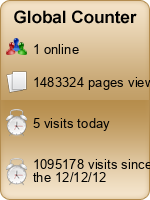Now, the VOA Learning English program, Words and
Their Stories.
You hear the word sustainable often in the news and
in conversation. Its meaning has changed in recent years.
Sustainable is an adjective, so it usually appears
before a noun. Before the 1960 s and 1970 s, the word usually meant ‘bearable’ or
‘defensible.’ Now, it also means “able to last or continue for a long time.”
The first record of the modern use of the word
referred to sustainable growth. This is an approach to business growth that can
continue without creating too many problems.
In the 1970 s, as awareness of the environment grew,
people became more concerned with the effects humans have on the earth. We need
to eat, of course, but we want our food to come from sustainable agriculture -
farming methods that do not completely use up or destroy natural resources.
Experts in sustainable agriculture talk about a
related concept, biodiversity. We know that diversity refers to the variety of
people or cultures in a group. Biodiversity is a measure of how many varieties
of living things such as plants or animals are in an environment. “The more the merrier” is the thinking behind
this term. Growing only one kind of food in an area is not sustainable because
there is no biodiversity. Have you heard of the Irish Potato Famine? In the
Nineteenth Century, when the potato crop failed, there was no other crop to
eat.
Organizations that want to show their concern about
the environment may say they are green, which means they are trying to protect
the natural world. Recycling, reusing, and reducing waste are some of the ways
we show how green we are.
A sustainable source of energy does not go away. For
example, solar energy is sustainable because the sun will always be shining. A
related word is renewable. A renewable source of energy is one that has an
unlimited supply. Fossil fuels, on the other hand, are not renewable. Energy
based on oil is not renewable because there is a limited supply of it.
Smart growth also is related to being sustainable.
In many cities today, young people are moving to places where they can walk or
take public transportation instead of driving a car. Smart growth results in
these kinds of neighborhoods. They are walkable urban centers meant to avoid
sprawl, the expansion of cities to new areas. This kind of growth can continue
a long time, because it uses less land and resources.
It is safe to say, you will hear this word very
often in the future.
I’m Jill Robbins.
Dr. Jill Robbins wrote this story for Learning
English. Mario Ritter was the editor.
Related Articles








0 nhận xét:
Đăng nhận xét
Chào bạn, NH rất mong sự đóng góp và chia sẻ của bạn